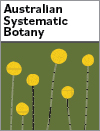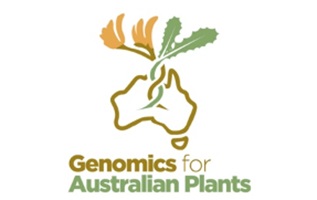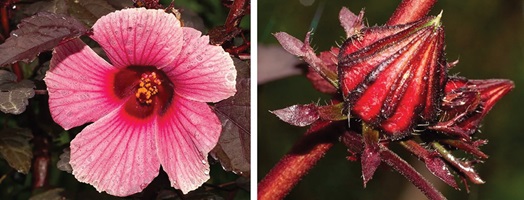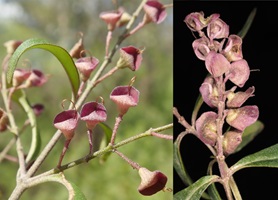Australian Systematic Botany
Volume 38
Number 3 2025
The genus Melichrus has received very little taxonomic attention and treatments have largely disagreed on species delimitation. We present results from in-depth morphometric and molecular (DArtSeq) analyses designed to test species boundaries. These new lines of evidence form the basis of detailed recommendations for a revised species-level taxonomy of Melichrus including the description of eight new species and one subspecies, recircumscription of previously described species and the correction of a longstanding nomenclatural misapplication. (Photographs by H. T. Kennedy and J. J. Bruhl.)
The science of genomics is rapidly revolutionising plant biodiversity science, and many institutions and researchers are ill-equipped to keep up with technical developments. To address this we established a national-scale consortium to build genomics capability and datasets for understanding the Australian flora. We outline the architecture and history of this collaboration and describe the major achievements to date, thereby demonstrating the value of a multi-institutional consortium approach. (Image credit: Glenn Harvey.)
This article belongs to the collection: Genomics for Australian plants.
A review of current bioinformatic approaches for analysing target-capture data in plants, with a particular focus on robust phylogenetic inference in the presence of processes that can cause phylogenetic conflict, such as genome duplication, reticulation, deep coalescence and rapid or simultaneous speciation.
This article belongs to the collection: Genomics for Australian plants.
The beloved plant genus Hibiscus is in for a shake-up, with a new classification changing well-known names. Traditional classifications of hibiscus have not reflected natural groups and new DNA evidence provides a fresh view. We provide new names for many species including the economically important plants kenaf (used for fibre), roselle (used for food, medicine and cosmetics), the state flower of Hawai’i and an Australian native species with potential as a male contraceptive treatment. (Photographs by Russell Barrett.)
We reclassify the genus Subulispora by confirming placement in the family Phlogicylindriaceae through phylogenetic analysis. We introduce two new species and propose two new combinations, enhancing the understanding of the Subulispora phylogeny. (Image credit: Maria Gabriella Andrade Primo de Souza.)
We present compelling evidence from morphological, DNA and phytochemical data that contributes to resolution of the Prostanthera ovalifolia assemblage, resulting in the clarification of P. cineolifera and description of three new species. Left, P. cineolifera; right, P. dyarubbin. (Image credits: left R. L. Palsson, right J. J. Bruhl.)










